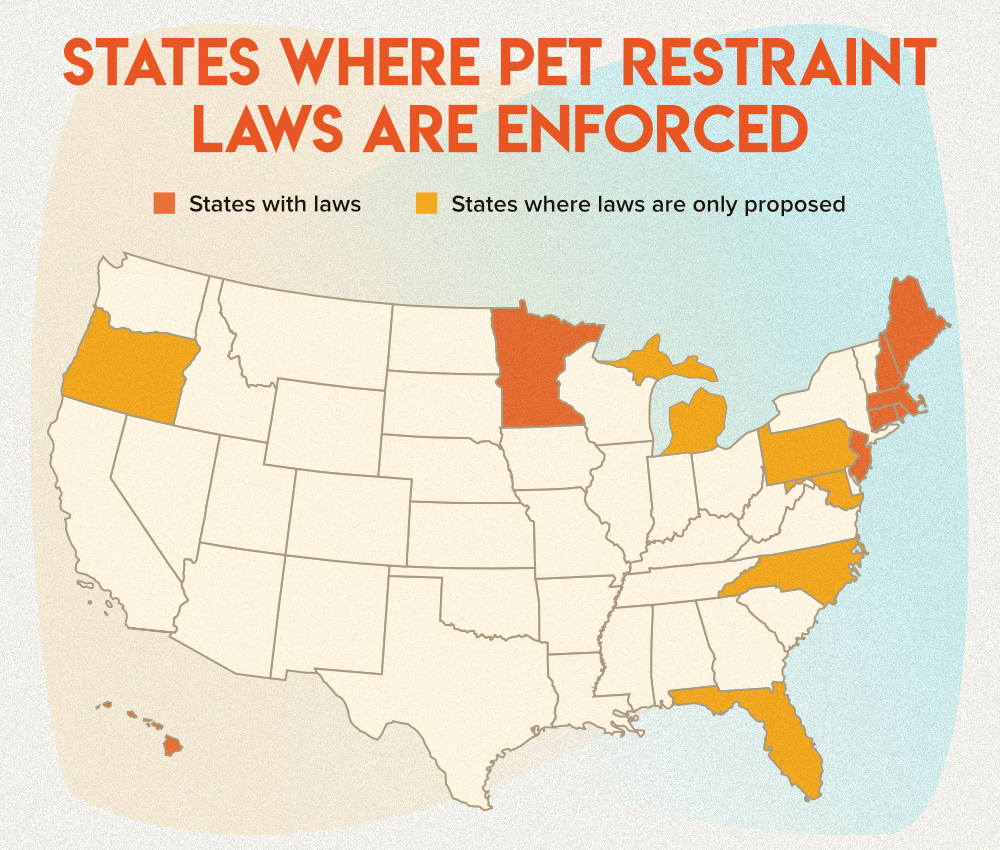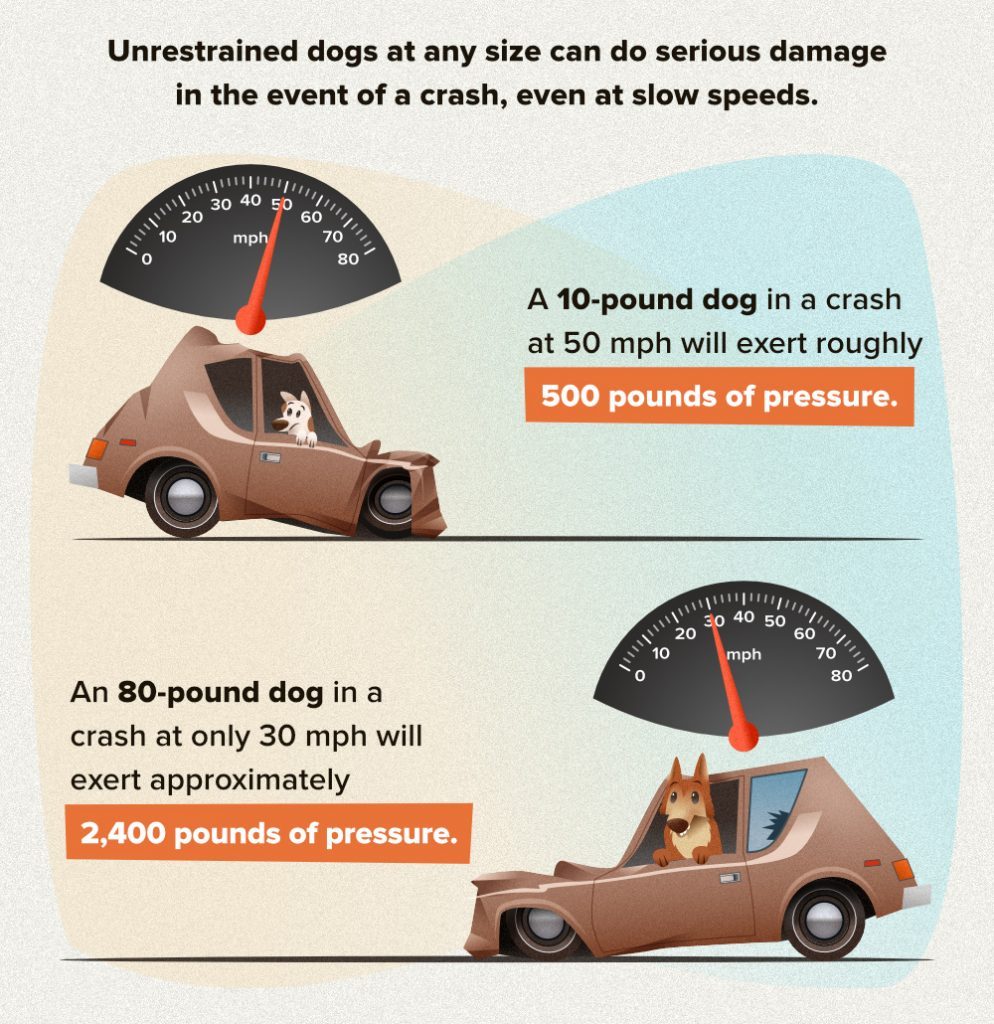While laws against driving offenses like using cellphones and texting are strictly implemented around the country, some states have turned their attention to pet restraint laws.
Distracted driving with pets and other animal-related offenses could get you a ticket just as easily as other common driving offenses. Take Hawaii: it’s one of the few states that explicitly forbids drivers having a dog on their lap. The greater New England area also puts a focus on the dangers of driving with unrestrained pets, specifically in the bed of trucks. In Connecticut, dogs being transported in an open truck bed must be in a crate or cage or must be secured to prevent them from falling, jumping or being thrown from the vehicle.
In recent years, several states have considered legislation to make dog seat belts mandatory. New Jersey even made headlines when it proposed a law that called for seat belts for dogs. Currently, only eight states have laws stating that your dog must wear a canine-specific restraint in a vehicle: Maine, Massachusetts, Minnesota, Connecticut, Hawaii, New Jersey, New Hampshire, and Rhode Island.
Other restraint requirements have been met with varying degrees of success — usually in the form of restricting dogs to the back seat of the car but not mandating a restraint system.
A Call to Action
Unfortunately, it often takes knowing someone who was in a crash with their dog or experiencing it yourself to implement a pet restraint. The use of a pet restraint is three times more common among people who have heard of situations where unrestrained dogs were injured or caused injury to other passengers in a car crash (32%), compared to respondents who are unaware of such a situation (9%).
We hope it doesn’t take a first-hand experience for you to start using a doggy restraint system. But in case you’re not sold on their value, consider the force of a crash.
An unrestrained 10-pound dog in a crash at 50 mph will exert roughly 500 pounds of pressure, and an unrestrained 80-pound dog at only a 30 mph crash will exert approximately 2,400 pounds of pressure.
So, that’s what airbags are for, right? Wrong.
In the event of a crash, airbags may save you, but this isn’t always the case for pets. Airbags save lives, but they explode with so much force that they can severely injure or even kill lightweight front-seat passengers. Treat airbag dangers the same for dogs as you would children 12 years old and younger. They’re not supposed to ride up front or be in a seat where they can be crushed by an airbag that deploys.

